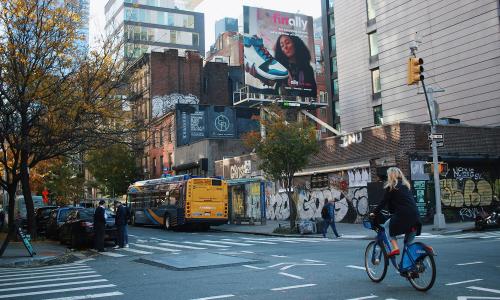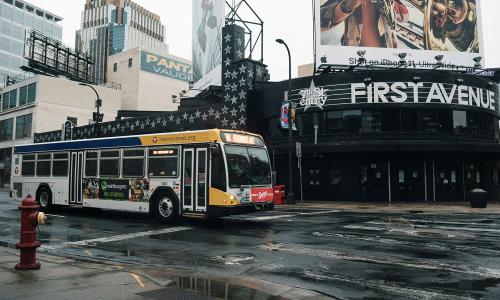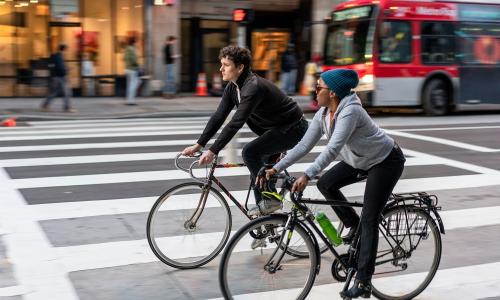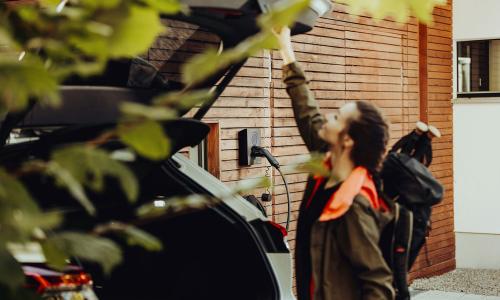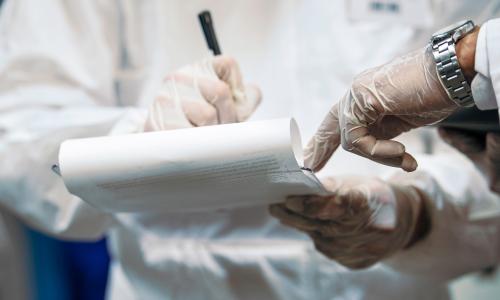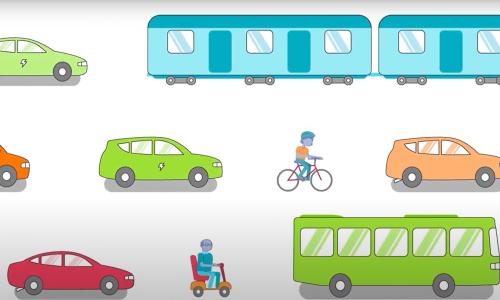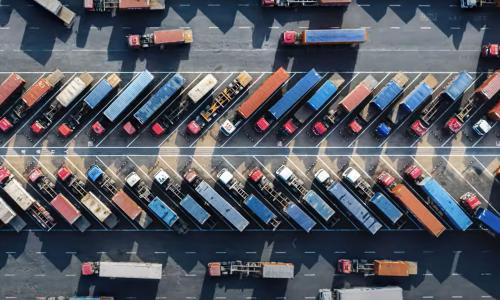Table of Contents
The current system of moving around people and goods is outdated, inequitable, and focuses on roads, not people. We can do better.
of people in the US live within walking distance of frequent transit
With the right investments, we can build a more reliable, accessible, and cleaner transportation system that delivers substantial benefits to people across the United States.
Why? The current US transportation system needs a serious overhaul. It is car-dependent, fossil-fueled, and fails to meet the needs of millions. But a better system—one that equitably serves a wide range of people, with their varied needs—is within our reach. We just need the policies.
Fixing a broken system
Underinvestment is leaving many of us stuck. For example: traffic-filled highways running next to schools and through communities are exposing individuals to dangerous air pollution. Neighborhoods that lack sidewalks, bike lanes, or frequent and accessible public transit options compound the problem. And burdens are shouldered inequitably by people of color and people with lower incomes.
While many wealthy countries built highway networks in the 20th century, missteps in the United States stand out. The government, pushed by entrenched interests, built highways through major cities and widened local streets, while simultaneously neglecting other aspects of transportation, like public transportation and safe walking and biking networks.
The good news: science-based policies and investments can improve our outdated system. By advocating for decisionmakers to shift priorities, we can move from historical disinvestment to a system that offers abundant access, in both urban and rural areas.
Aside from creating a more affordable, equitable and accessible system for the future, fixing our broken system will save billions annually and help us meet our climate goals while reducing air pollution.
Giving people more choices
There’s no single tool or policy that will transform our outdated and polluting transportation system. Given the urgency and danger climate change poses, we must use multiple strategies.
We need to provide options for people to get around by increasing investments in walking, biking, and transit. When people have clean, safe, and affordable options to get where they need to go, they are able to decrease the number of miles they drive.
We also need to reduce the impact of transportation, the largest source of global warming emissions in the US, by increasing electrification of personal vehicles, heavy duty commercial vehicles, and transit.
Transportation is responsible for 28 percent of human-caused global warming emissions in the United States, and gasoline and diesel-powered passenger cars and trucks are the source of a majority (57 percent) of those emissions. We can’t tackle the urgent problem of climate change unless we directly address the biggest sources of emissions.
